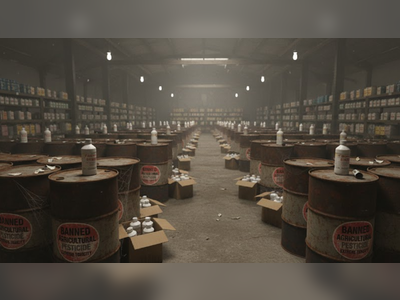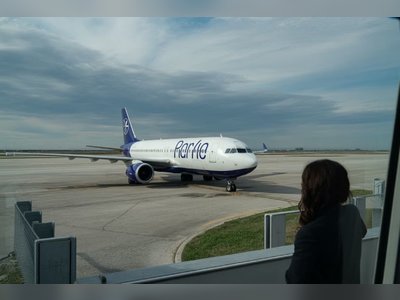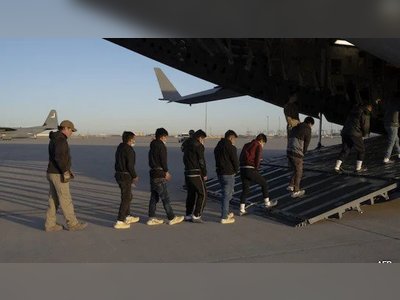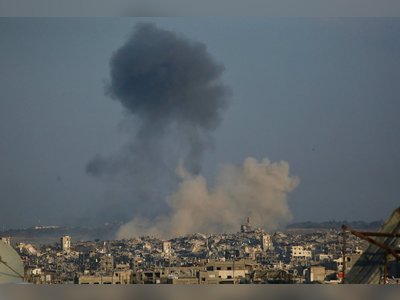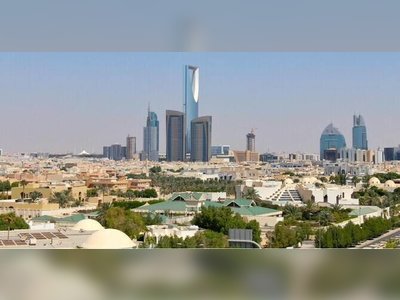Massive Explosion at Iran's Bandar Abbas Port Linked to Suspicious Chemical Shipments
At least five dead and more than seven hundred injured after blast at Iran’s key Shahid Rajaee port; investigation launched into containers reportedly containing rocket fuel chemicals from China.
Iranian authorities are investigating a major explosion that struck the Shahid Rajaee port in Bandar Abbas on Saturday.
The blast killed at least five people, injured over seven hundred others, and caused extensive damage across a wide area.
President Masoud Pezeshkian ordered a comprehensive investigation into the cause of the incident, with preliminary reports suggesting that containers possibly filled with chemicals detonated in a corner of the port.
Shahid Rajaee port, located approximately fifteen kilometers southwest of Bandar Abbas city along the Strait of Hormuz, is Iran’s largest commercial port.
It handles about seventy percent of the country's cargo, equivalent to around eighty million tons annually.
The port is also a critical oil and petrochemical hub.
In 2020, it was targeted in a cyberattack reportedly linked to Israel, disrupting operations for three days.
Reports over recent months indicated that two Chinese vessels, the Golbon and the Jairan, docked at the port carrying shipments of sodium perchlorate, a chemical compound widely used as a key component in solid rocket fuel for ballistic missiles.
Intelligence sources stated that the Golbon arrived in February carrying one thousand tons of sodium perchlorate, while the Jairan arrived in late March with another shipment of one thousand tons.
The chemical was reportedly ordered by the Self-Sufficiency Jihad Organization (SSJO), one of the entities responsible for Iran’s ballistic missile development.
Despite U.S. sanctions imposed on the vessels, both shipments successfully reached Bandar Abbas.
Experts noted that sodium perchlorate has limited civilian uses and is primarily employed in rocket fuel manufacturing.
The chemical is crucial for Iran’s production of medium-range ballistic missiles, including the Kheibar Shekan and Haj Qassem models.
Fragments of Kheibar Shekan missiles were reportedly identified following Iran's missile attacks on Israel in April and October 2024.
The explosion reportedly occurred around noon local time, during a regular working day in Iran.
Initial reports suggested a fuel container ignition; however, Iranian state television later denied any link between the explosion and the port's energy facilities.
Iran's state oil distribution company confirmed that oil operations were unaffected.
Iran’s official IRNA news agency later reported that the explosion originated from a warehouse storing hazardous materials and chemicals.
Surveillance footage captured the moment of the explosion from one of the port's hangars.
According to Iran’s Fars news agency, the event began with a fire near the container docks operated by the Sina Company, which escalated within minutes into a large blast.
Authorities have not confirmed whether the explosion was caused by an accident or by deliberate sabotage.
The force of the explosion, attributed to highly explosive material, drew comparisons to the devastating 2020 Beirut port explosion.
However, Iran’s ambassador to Lebanon, Mojtaba Imani, rejected any direct comparison, stating that the scale of the Bandar Abbas blast was significantly smaller.
Bandar Abbas is also home to a major base of Iran’s Islamic Revolutionary Guard Corps (IRGC) Navy, which has previously been involved in operations seizing vessels in the Strait of Hormuz.
As of Saturday, investigations into the exact cause and accountability for the explosion remain ongoing.
The blast killed at least five people, injured over seven hundred others, and caused extensive damage across a wide area.
President Masoud Pezeshkian ordered a comprehensive investigation into the cause of the incident, with preliminary reports suggesting that containers possibly filled with chemicals detonated in a corner of the port.
Shahid Rajaee port, located approximately fifteen kilometers southwest of Bandar Abbas city along the Strait of Hormuz, is Iran’s largest commercial port.
It handles about seventy percent of the country's cargo, equivalent to around eighty million tons annually.
The port is also a critical oil and petrochemical hub.
In 2020, it was targeted in a cyberattack reportedly linked to Israel, disrupting operations for three days.
Reports over recent months indicated that two Chinese vessels, the Golbon and the Jairan, docked at the port carrying shipments of sodium perchlorate, a chemical compound widely used as a key component in solid rocket fuel for ballistic missiles.
Intelligence sources stated that the Golbon arrived in February carrying one thousand tons of sodium perchlorate, while the Jairan arrived in late March with another shipment of one thousand tons.
The chemical was reportedly ordered by the Self-Sufficiency Jihad Organization (SSJO), one of the entities responsible for Iran’s ballistic missile development.
Despite U.S. sanctions imposed on the vessels, both shipments successfully reached Bandar Abbas.
Experts noted that sodium perchlorate has limited civilian uses and is primarily employed in rocket fuel manufacturing.
The chemical is crucial for Iran’s production of medium-range ballistic missiles, including the Kheibar Shekan and Haj Qassem models.
Fragments of Kheibar Shekan missiles were reportedly identified following Iran's missile attacks on Israel in April and October 2024.
The explosion reportedly occurred around noon local time, during a regular working day in Iran.
Initial reports suggested a fuel container ignition; however, Iranian state television later denied any link between the explosion and the port's energy facilities.
Iran's state oil distribution company confirmed that oil operations were unaffected.
Iran’s official IRNA news agency later reported that the explosion originated from a warehouse storing hazardous materials and chemicals.
Surveillance footage captured the moment of the explosion from one of the port's hangars.
According to Iran’s Fars news agency, the event began with a fire near the container docks operated by the Sina Company, which escalated within minutes into a large blast.
Authorities have not confirmed whether the explosion was caused by an accident or by deliberate sabotage.
The force of the explosion, attributed to highly explosive material, drew comparisons to the devastating 2020 Beirut port explosion.
However, Iran’s ambassador to Lebanon, Mojtaba Imani, rejected any direct comparison, stating that the scale of the Bandar Abbas blast was significantly smaller.
Bandar Abbas is also home to a major base of Iran’s Islamic Revolutionary Guard Corps (IRGC) Navy, which has previously been involved in operations seizing vessels in the Strait of Hormuz.
As of Saturday, investigations into the exact cause and accountability for the explosion remain ongoing.


